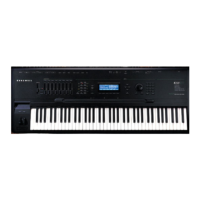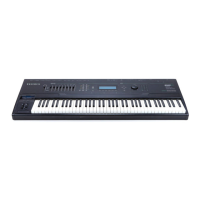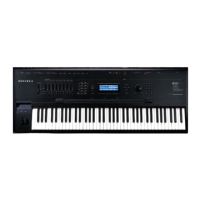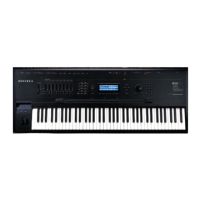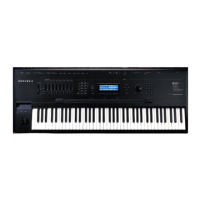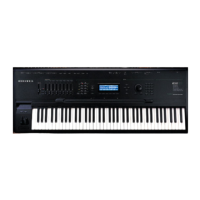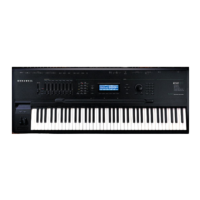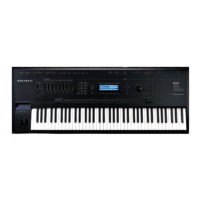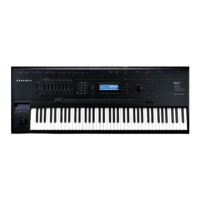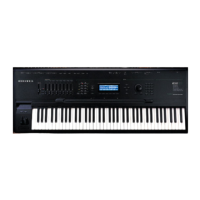Program Mode and the Program Editor
K2500 Program Structure
6-2
K2500 Program Structure
Programs are the K2500’s performance-level sound objects. They’re preset sounds that can be
played on any of the 16 MIDI channels. Other synths refer to them as patches, presets, voices,
multis, etc. Each program consists of from one to three
layers
(or up to 32 layers for a drum
program - see below), each of which in turn consists of a keymap and an algorithm for
processing the samples that make up the keymap. Samples are stored in the K2500’s ROM, or
loaded into optional RAM via Disk mode, MIDI standard sample transfer, SMDI sample
transfer, or by your own sampling efforts. Each sample is a separate digital recording of an
instrumental note, a drum, a waveform or a sound effect. The individual samples are assigned
to specific key ranges and are assigned to be triggered at specific attack velocities. These
assignments constitute the keymap.
When you trigger a note, the K2500 looks to the keymap of each
layer
of the currently active
program(s) to determine which samples to play. The sound engine then fetches the requested
samples and generates a digital signal that represents the timbres of the samples. This signal
first passes through the five DSP functions that make up the algorithm, then through the global
effects processor (if assigned to an audio output pair that uses effects), then finally appears at
one or more of the audio outputs.
The layer is the K2500’s basic unit of polyphony, that is, each layer constitutes one of the 48
voice channels the K2500 can activate at any time. If you have a program that consists of two
layers covering the note range from C 0 to C 8, each note you trigger will trigger two voice
channels.
The Program Mode Page
ProgramMode||||Xpose:0ST|||<>Channel:1||
!!!!!!!!!!!!!!!!!!@|199|Default|||||||||
KeyMap|Info|||||||#|209*Dig|it|al|||||||
|Grand|Piano||||||#|
||1|Righteous|Piano|
||||||||||||||||||#|||2|Mondo|Bass||||||
||||||||||||||||||#|||3|Killer|Drums||||
%%%%%%^%%%%%%^%%%%$|||4|Weeping|Guitar||
Octav-|
Octav+|
Panic||
Sample|
Chan-||
Chan+
The top line of the Program mode entry level page shows your location, the present MIDI
transposition, and the current MIDI channel.
The box at the left of the Program mode page tells you which keymap is assigned to each layer.
Layer 1 is at the top. Layers 2 and 3, if any, are listed below layer 1. If a
drum program
is
selected, the box tells you how many layers it has. If a drum program is selected, and the
current MIDI channel is not a drum channel, the program’s name will appear in parentheses in
the display, and the program will not play (more on this in the next section). The box at the left
of the display will tell you which channels are drum channels. (See the Drum Channel
parameter in Chapter 11).
The line beneath the name of the keymap indicates the keyboard range of the layer. On the
Program mode page above, for example, the layer extends from C 0 to C 8—the default range.
The representation of these layer ranges is approximate; they’re intended to let you know if you
have a layered keyboard (lines overlapping) or a split keyboard (lines not overlapping).
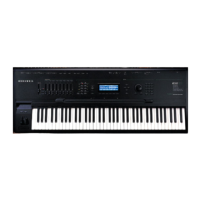
